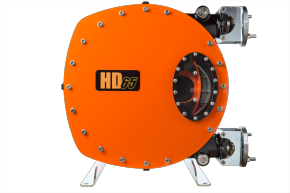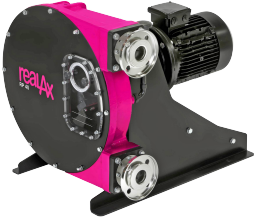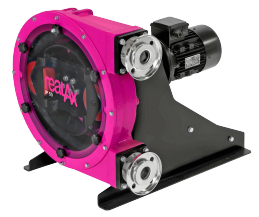A peristaltic pump is a type of positive displacement pump used for pumping a variety of fluids. The fluid is contained within a flexible tube fitted inside a circular pump casing.



Peristaltic Pumps
9 series from 3 manufacturers
-
- Analysis
- Circulation
- Cleaning
- Control
- Conveying
- Cooling
- Discharge
- Distribution
- Dosing
- Drain
- Drainage
- Feed
- Filling
- Filtration
- Flow Control
- Handling
- High-Volume
- Injection
- Irrigation
- Level Control
- Lift
- Lifting
- Loading
- Low-Pressure
- Lubrication
- Medium-Pressure
- Metering
- Mixing
- Off-loading
- Powder Coating
- Pressurisation
- Process
- Processing
- Recirculation
- Replacement
- Rinsing
- Sampling
- Settling
- Transfer
- Treatment
- Unloading
- Washing
-
- Abrasive Liquids
- Acetate
- Acids
- Adhesives
- Alcohols
- Aluminium Oxide Slurry
- Ammonia
- Beer
- Biological Broths and Slurries
- Carbon Fibers
- Caustic Solutions
- China Clay Slurry
- Clay
- Concrete
- Corrosive Dyes
- Corrosive Liquids
- Crystalline Slurry
- Dairy Products
- Detergents
- Dye Pigment
- Emulsions
- Ethylene Glycol
- Ferric Chloride
- Foam Protein
- Fruit Concentrates
- Gels
- Glycol
- High Viscosity Liquids
- HydrochloricAcid
- Lake Water
- Latex
- Light Fluids
- Lime
- Low NPSH
- Low Viscosity Liquids
- Milk
- Molasses and Syrups
- Non-Newtonian Fluids
- Oil, Fats and Mayonnaise
- Paints
- Paints Resins
- Personal Care Products
- Pet Food
- Phosphoric Acid
- Sauces
- Seawater
- Sensitive and Viscous Fluids
- Separated Oil Processing
- Sewage
- Silver Nitrate
- Soaps and Detergents
- Solids and Abrasives
- Sulphuric Acids
- Surfactants
- Thixotropic Fluids
- Vegetable Oils
- Viscose
- Viscous Liquids
- Wastewater
- Water
- Wine
- Wort
-
- Abrasion Resistant
- Adjustable-Flow
- Automatic
- Chemically Resistant
- Close-Coupled
- Compact
- Double-Acting
- Electric
- Explosion-Proof
- Fish Friendly
- Flange
- Heavy-Duty
- High-Efficiency
- High-Performance
- Horizontal Mount
- Intrinsically Safe
- Low Shear
- Low-Noise
- Mechanical
- Seal-less
- Self-priming
- Single-Stage
- Solids Handling
- Variable Speed
Do you need help finding the right pump that meets your needs?
We have experienced experts who are ready to help you!
Get in touch hereHOW DOES A PERISTALTIC PUMP WORK?
Peristaltic pumps work according to the peristaltic principle. The hose, as the central component in the pump, is compressed by sliding shoes or rollers that are attached to a rotor and moved over the hose. The pinched spot moves along the tube, and the contained liquid is pushed forward. After compression, the restoring forces of the high-strength hose ensure that it opens back into its original shape. This creates a strong negative pressure, which supplies more liquid from the line.
In high-pressure hose pumps in particular, the rotor is exposed to heavy loads.
Peristaltic pumps are a pre-training pump and work according to the peristaltic principle. The hose, which can consist of a variety of materials, is paced in the pump housing. The pump rotor exerts pressure when it rotates on a set of rollers or pressure jaws which, in turn, compress the hose. This creates a vacuum behind the roller or pressure jaw that sucks in liquid in the hose while the next roller or pressure jaw gently pushes the liquid forward through the hose.The only wear part of the pump is the hose which can be quickly and economically replaced on site.
The hose, as the central component of the pump, is compressed by pressure jaws or rollers attached to a rotor and moved over the hose. The pinched spot moves along the tube and the entrapped liquid is pushed forward. After compression, restorative forces from the high-strength hose ensure that it opens back to its original shape. This creates a strong negative pressure, which adds more fluid from the pipe.
Especially in high-pressure hose pumps, the rotor is exposed to large loads. Some peristaltic pumps have a lifetime warranty on the rotor. Peristaltic pumps with an integrated rotor bearing significantly reduce the mechanical stress on the gear unit and the motor, which ensures a longer service life.
Hose Pump Features:
- Seal-less design: Peristaltic pumps have no seals, thus avoiding issues such as leaks of corrosive chemicals.
- Low maintenance costs: Generally, the only part that will need replacing is the hoses or tubes.
- Self-priming: Peristaltic pumps have the ability to run dry without the need for costly repairs. The recovery of the hose or tube creates a powerful self-priming action and allows the pumps to move liquids containing entrapped air or that can off gas.
- High suction lift: The powerful suction provided by the recovery of a re-enforced hose gives hose pumps suction lift capabilities up to 9.5m of water.
- Abrasion resistant: Hose life is not related to a product’s abrasive qualities. The hose only fails due to fatigue or chemical action.
- Reversible: Peristaltic pumps are reversible and can be used to empty lines or clear blockages.
WHAT DIFFERENT KINDS OF PERISTALTIC PUMPS ARE THERE?
With peristaltic pumps, the compression of the hose can be achieved by rollers or shoes. Quantity and dosing determines the type.
Roller peristaltic pumps are usually more advantageous when dosing smaller quantities or at lower pressure levels. For higher dosing quantities or at higher working pressures, sliding shoe hose pumps work more efficiently and are more gentle on the hose.
IN WHICH APPLICATIONS ARE PERISTALTIC PUMPS USED?
- Peristaltic pumps are the first choice for metering and pumping liquids in many different industries.
- Some peristaltic pumps can meter abrasive liquid mixtures such as milk of lime, ferric chloride and other flocculants in water treatment plants.
- High-pressure hose pumps are used to feed filter presses in sewage treatment plants in order to dewater the sewage sludge.
- Peristaltic pumps with hygiene certification meter colorants, flavors, dairy products and shear-sensitive media in food production.
THE CORRECT SIZING OF PERISTALTIC PUMPS
In addition to the size, the right selection of components determines efficiency, safety and service life. An even, constant flow rate is achieved by pulsation dampers. This protects the pipelines and all upstream and downstream components of the system. The restoring forces of the hose are supported with a vacuum device, so that the suction vacuum is created more quickly.
WHY BUY PERISTALTIC PUMPS FROM AXFLOW
- AxFlow is the preeminent supplier of positive displacement pumps in the UK and has over 60 years’ experience when it comes to peristaltic pumps.
- AxFlow offers national support from its 3 technical service centres spread across the UK.
- AxFlow offers 6 different ranges range of peristaltic pump including hose pumps for flows up to 72 m3/hr, smaller tube pumps and dosing pump models.
- AxFlow stocks replacement hoses and tubes both in the UK and in its European Distribution Centre.
| Series | Tube/Hose | Roller/Shoe | Application | Max Flow Rate | Max Pressure |
| Realax APY | Tube | Roller | Dosing | 1760ml/min | 2 bar |
| Realax IP | Hose | Roller | Transfer | 35 m3/hr | 8 bar |
| Realax ISI | Hose | Roller/shoe | Transfer | 1.5 m3/hr | 8 bar |
| Realax RP | Hose | Roller | Transfer | 50 m3/hr | 15 bar |
| Realax RP Duplex | Hose | Roller | Transfer | 72 m3/hr | 15 bar |
| Blue-White Flex-Flo | Tube | Roller | Dosing | 0.004-600 l/hr | 6.9 bar |
| Blue-White Flex-Pro | Tube | Roller | Dosing | 0.002-600 l/hr |
8.6 bar |
hOW TO SELECT A pERISTALTIC PUMP
The correct sizing of peristaltic pumps:
In addition to the size, the right selection of components determines efficiency, safety and service life. An even, constant flow rate is achieved by pulsation dampers. This protects the pipelines and all upstream and downstream components of the system. The restoring forces of the hose are supported with a vacuum device, so that the suction vacuum is created more quickly.
The important issues that need consideration when selecting peristaltic pumps are:
- Flow and pressure requirements.
- The liquid both in terms of its compatibility with tube and hose options and whether the use of a peristaltic pump is suitable.
- Liquid temperature as this would affect the tube and hose material choice.
- How many hours per day will the pump be required to run.
In general, it's better to oversize a peristaltic pump as this will allow you to run it more slowly thereby increasing tube life.
peristaltic pump Maintenance
Short-term maintenance:
- Check the pump pipeline for excessive wear. Turn the pump wheel by hand to check the overall flexibility.
- Although hose pumps can run dry, If the bearing has dry wear add bearing lubricating oil to the bearing body. The oil level should be at the center line of the oil standard. The lubricating oil should be replaced or replenished in time.
- Assess whether the tightening bolts on the pump head of the peristaltic pump are tightened
Long-term Maintenance:
- If the peristaltic pump is out of service for a long time, it is highly recommended to disassemble the pump, wipe off the water, apply grease to the rotating parts and joints, and store them properly.
- During the winter season, it is recommended to drain plug at the lower part of the pump body should be unscrewed to drain the medium. Prevent freezing and cracking.
How to change the tube or hose in an Industrial Peristaltic Pump?
Changing the hose is one of the few maintenance tasks that occurs with hose pumps after a while. Basically, it is important that the replacement hose not only fits the pump, but also the respective application. For the best possible efficiency and durability of the hoses, the compression pressure on the hose is finely adjusted using shim plates on the rotor.
Detailed instructions on how to change the hose can be found in the operating instructions supplied with the pump and in our videos for changing the hose for roller hose pumps and changing the hose for sliding shoe hose pumps.
Replacement parts and service for Peristaltic pumps:
Replacement hoses for peristaltic pumps are available in many materials for different pumped media and in different sizes. A large selection of hoses, components and entire pumps are available directly from our European central warehouse with short delivery times. Our service technicians are happy to adapt the connections and base dimensions to your system and are also available for maintenance and repair work afterwards.
Perstaltic pump hose and tube materials
AxFlow supply peristaltic pump hoses in a range of different materials, such as:
- NBR
- NR
- EPDM
- CSM
- NBR (FOOD)
Our hoses are direct replacements for Bredel pump hoses, providing a durable and cost effective solution for a range of operating conditions. Contact one of our specialist team members for guidance selecting the required hose materials for your pumping application.






